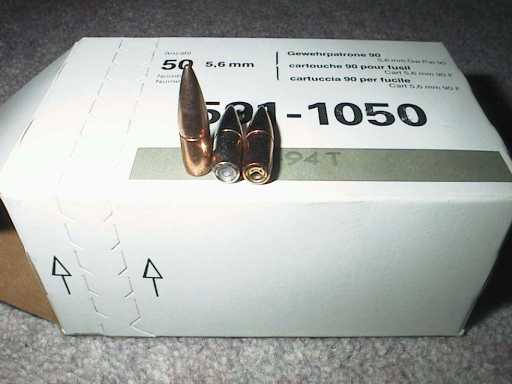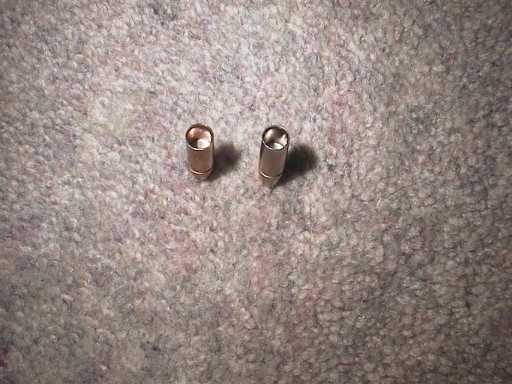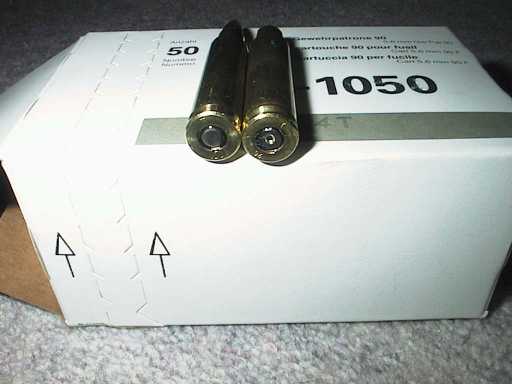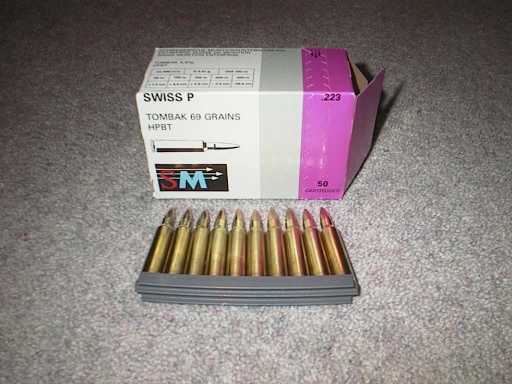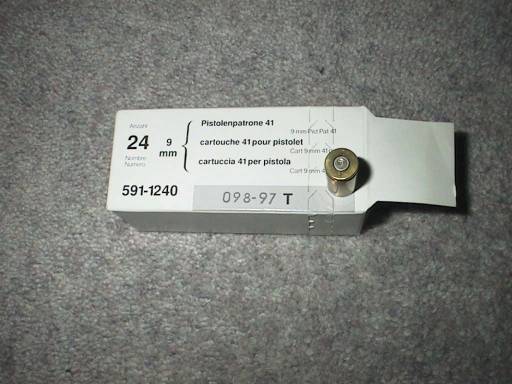11 October, 2017 – Over the years the Conservative Party has always pretended to be friendly towards shooters, and in some cases they clearly were – David Cameron is a shooter and did quite a lot for us, such as holding back fee increases. However the Tories are possessed of a police state mentality which generally overcomes any libertarian feelings. Thatcher was in power when self-loading rifles were banned in 1988; John Major was in power when handguns were banned in 1997 and there are many other examples.
The latest example is a consultation paper introduced by the Home Office. (This is in addition to a previously announced consultation on banning offensive weapons.) Almost as a casual throwaway line, the press release mentions the Government wants to ban .50 calibre rifles and “rapid fire rifles”. I assume the latter refers to the various contraptions that have come about in the last few years that are essentially semi-semi-automatic rifles, that usually feature some sort of double-sear/double-trigger arrangement that requires you to press down on a lever between shots or pull the trigger twice to fire the rifle.
The Government originally proposed banning .50 calibre rifles way back in 2002 after the 9/11 attacks, amid fears terrorists might start shooting down airliners with them. This plan never materialised as the Govt. later seemed to be satisfied that this wasn’t as big of a problem as originally feared as armour-piercing ammunition was prohibited in 1992. Since 2002, the use of .50 calibre rifles (we’re talking about .50 BMG and 12.7x108mm here) in long-range target shooting has declined due to newer more ballistically efficient ammunition such as .408 CheyTac and .416 Barrett being developed. Even the British Army now favours the .338 Lapua Magnum for the designated marksman role.
Essentially the Govt. wants to ban something never used in a crime in GB (they’ve shown up in Northern Ireland), that few people legally own (as there are very few approved ranges) and which is essentially obsolete anyway. Never underestimate the paranoia of the police.
So-called “rapid fire rifles” are by definition not rapid-fire, as a semi-automatic AR-15 for example is already a neutered version of the fully-automatic version and a double-sear/lever-release version fires even more slowly. In the hands of a skilled marksman they can be fired somewhat quickly but the same is true of a century-old .303 SMLE. Anyone who has used a bolt-action/straight-pull version of an AR-15 knows how slow they can be to operate so it’s hardly surprising people came up with a way to fire them a bit more quickly.
The Policing And Crime Act
You could be forgiven for thinking the Tories aren’t all that bad because as previously mentioned the Policing and Crime Act 2017 contained quite a lot of improvements to the Firearms Act, unfortunately at the very last moment at report stage in the Commons, the Home Office inserted a new section into the Bill that became section 128 of the Act. Being inserted without debate, it is very badly worded.
This has the effect of requiring all deactivated firearms to be deactivated to the current Home Office specification in order to be sold or gifted, in Great Britain. The most recent specification was promulgated on June 3rd, 2016. The reasoning behind this is that the EU introduced a new deactivation specification in April, 2016. Thus the motivation for a new British specification is the EU? Confused? The new British specification is based upon the new EU specification but they are substantially different (the conspiracy theorist in me thinks this was done mainly to stop imports from other parts of the EU – the official explanation is that it was done to correct technical problems). Moreover the section talks about how it doesn’t apply to transfers that occur outside the EU, so when and if the UK actually leaves the EU, the section therefore no longer applies. This is law-making in the era of Brexit, apparently. One can only speculate that if the UK leaves the EU, the June 2016 specification will be scrapped and everything will return to the older 2010 specification. (This is of course assumes the UK is no longer subject to the European Firearms Directive after Brexit, and that depends on what form Brexit takes).
Unfortunately this will be far too late for a number of dealers in deactivated firearms, such as Ryton Firearms, whose business was destroyed by this new law. A lot of customers are no longer interested in buying deactivated firearms that have been deactivated to the new specification and a lot of other customers are taking a “wait-and-see” approach hoping that the new regulations will eventually be withdrawn.
I suppose dealers could rent deactivated firearms to customers, or perhaps a 99-year lease? At least that way older specification deactivated firearms could be transferred.
Big time warning to anyone who has an older specification deactivated firearm – don’t sell or gift it to anyone unless you have it redone to the new specification.
Bear in mind this whole situation is still in flux – the EU accepted that there were technical problems with their specification and may then adopt the UK specification as their new specification. If this happens, I suspect the UK will still not be satisfied and will further fiddle with the UK specification out of fear of imports from the EU flooding the UK. More interestingly the EU has proposed recognising certain “equivalent” deactivation standards that pre-date the April 2016 specification, which means if they recognise the 2010 specification, that will further confuse the situation as section 128 doesn’t make provision for anything other than the current Home Office specification. So if the EU recognises the 2010 specification, will the Home Office? Like I said – badly worded.
And then of course there is the new EFD…
The revised European Firearms Directive
And onto the next tale of woe – the revised European Firearms Directive that was adopted on May 17th and must be transposed into the national law of Member States within 15 months. For those of you paying attention, well before the UK leaves the EU (assuming it gives up on European law completely, I wouldn’t be taking bets on that.)
It contains many new provisions, which run the gamut:
- The adoption of a new marking standard compliant with the UN protocol, this is not that big of a deal because Proof House markings are still acceptable;
- A requirement that Member States maintain records of all firearms sold or transferred in their territory, including – get this – up to 30 years after their destruction which obviously requires the destruction of firearms to be somehow kept track of. It’s laughable, unfortunately as it only applies to dealers and brokers, not much opposition was expressed about it and I suspect it’s one of the provisions that will ultimately cause the most problems;
- Category D is scrapped and merged with Category C (subject to declaration), this means single and double-barrel shotguns become subject to “declaration to the authorities”, which doesn’t have any impact in the UK but will make life difficult in places like France and Austria;
- Member States must have some sort of “monitoring” system of gun owners, originally this was going to be a requirement for medical checks but now it’s been more vaguely worded to say “relevant” information must be “assessed” in compliance with national law;
- Newly deactivated firearms go into Category C. This means that in the UK they will have to be declared to the police in some form or other, yet to be decided. The Home Office seems to think that RFDs will be able to send this information to the police, but transfers of deactivated firearms don’t currently have to go through RFDs so it will require some sort of change in the law. It’s also not clear how retroactive this provision is, any deactivated firearm “placed on the market” must be done to an EU recognised specification, so would that mean for example if the EU recognised the 2010 specification the transfer of those guns must be declared to the police as well? But under current British law, anything pre-June 2016 cannot be sold or gifted anyway;
- Semi-automatic centrefire rifles fitted with magazines that hold more than ten rounds and handguns with magazines that hold more than twenty rounds go to Category A (prohibited), with some fairly broad exemptions for collectors, target shooters and reservists. So if you don’t fit the gun with a magazine, it stays in Category B (subject to authorisation), which is a very complex way of imposing a magazine restriction. If you have a Category B firearm with an over-capacity magazine then the Member State has to withdraw the authorisation to possess the firearm;
- Fully-automatic firearms converted into semi-automatic firearms go to Category A, with an exemption for reservists who finish their service and hold onto a rifle, provided they comply with the target shooting exemption for Category A firearms;
- Firearm licences have to be renewed at least once every 5 years – so the BASC plan for 10-year Shotgun Certificates goes up in smoke. Additionally, firearms must be kept stored securely, which at first glance doesn’t seem to be a big deal at it is already the law in the UK – but not for shotgun components and shotgun ammunition, so that might be a problem;
- Blank firers, CS guns, etc. must be made in such a way that they cannot easily be converted into firearms and the EU will adopt an official technical specification for them by September 14th, 2018 (there are already equivalent provisions in British law).
The one provision that is really going to cause big problems are the magazine restrictions, because it’s not clear how they will work in practice. The magazines are not prohibited, but Article 10 prohibits the acquisition of them, so if you buy an AK-47 magazine at a car boot sale, that’s illegal. The other problem is that it says: “loading devices for centre-fire semi-automatic firearms” are the ones affected. What does that mean exactly, does that mean if you have a straight-pull AR-15 (which is Category C) you can or cannot acquire magazines for it? Because the magazines are designed for a Category A firearm, will they be subject to the restriction, or because they’re “dual-use” will they be exempt? And if they are considered exempt as “dual-use”, doesn’t that mean that someone can avoid prosecution for acquisition simply by saying it was intended for use with a bolt-action rifle?
My guess is that this will work in a similar way to the ban on expanding pistol ammunition between 1992 and 1997, if you’re using it with a Category C rifle, you’ll probably be okay and there will be a condition on your firearm certificate that says you’re exempt, but if you have one without an FAC, that will be illegal. But will you be required to have the magazines listed on your FAC, because if you’ve owned AR-15s for any length of time you’re usually up to your eyeballs with various types of magazine!
British shooters could end up in a bit of a mess on this issue as the exemptions for target shooters from Category A talk about firearms, not Category C firearms with magazines designed for Category A firearms.
Oh well. I have to say I’m highly skeptical that after all of this is implemented that the Govt. will repeal it all in the name of Brexit.
“The problem is not the problem. The problem is your attitude about the problem.” – Capt. Jack Sparrow in ‘Pirates of the Caribbean’.

